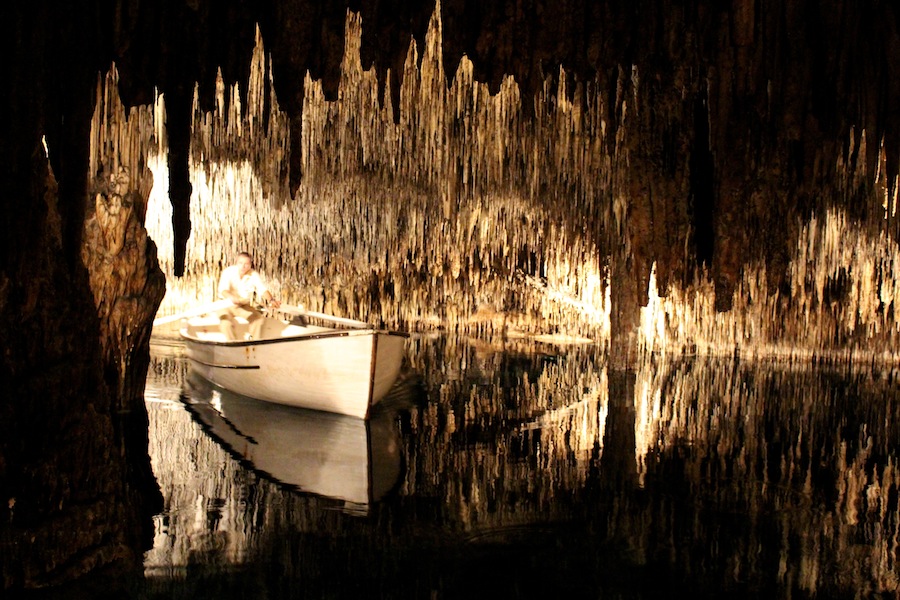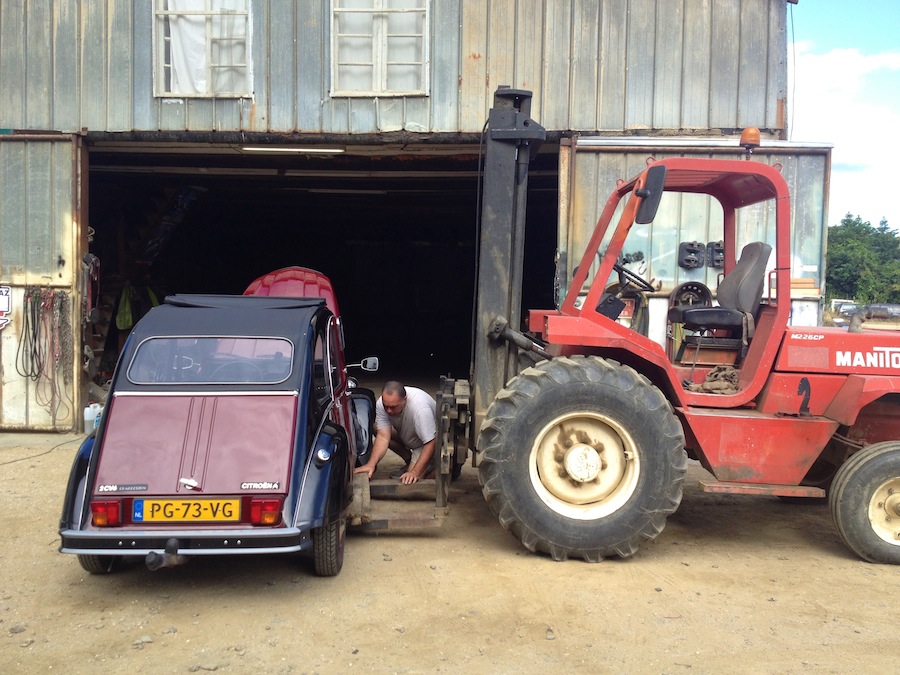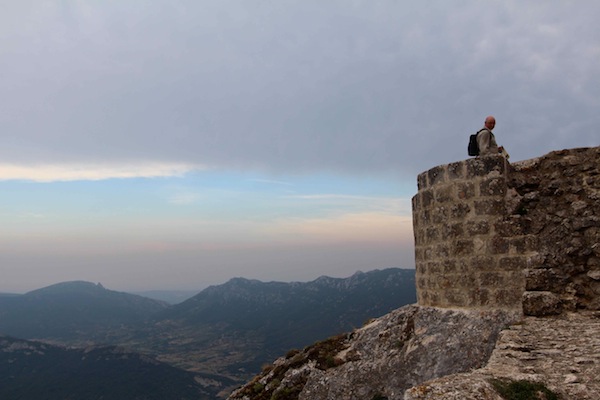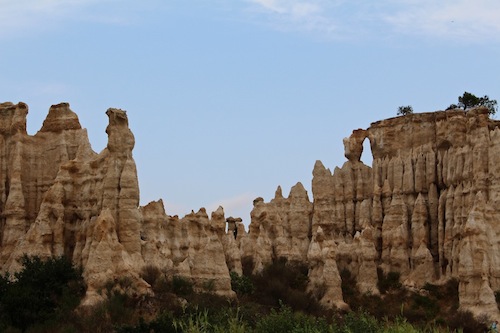In case you haven’t noticed – we are on Instagram too. Check it out at: http://instagram.com/ourextraordinaryplaces


It seems pure fantasy to say we crossed one of the world’s largest subterranean lakes in the Dragon’s Caves in an underground boat – but that’s exactly what we did.
The existence of the Cuevas Drach, or Dragon Caves, at Porto Cristo in Mallorca, has been known since the Middle Ages. It is thought they got their name from ancient folklore claiming a big beastie lived deep inside.
Real exploration came much later. In 1896 Lake Martel, which flows through the caves, was discovered by and named after Edouard Martel – the founding father of speleology, the study of caves. It is around 170 metres long and up to twelve metres deep. He also discovered two of the four caves that make up the mythical dragon’s lair deep in the belly of the island.
Archaeologists have found evidence of Bronze Age, Carthaginian, Roman and Moorish activity within the caves, proving they were occupied for more than 2,000 years. More recently they have rightly become the premier tourist attraction on Mallorca. But the lake is only half the story. Well before the dragon’s tales were told, silent, seeping water was making magic and has created the most fantastic stalactite and stalagmite formations.
The calcified creations come in all shapes and sizes. As we took a gentle stroll through evocatively lit walkways light and shadow was bouncing off massive structures in the 25 metre deep caves or illuminating the smallest nub as it worked towards maturity in a few millennia. All with a barely audible drip, drip, drip backdrop. The tour covers just over one kilometre in about an hour, the subjects of the tour manage one centimetre every 100 years.
At the end of the route the cavern opens up into a natural amphitheatre and we were treated to what must be one of the longest running live music concerts in the world. Lights were doused and through the dark, the glow of a single rowing boat strung with white lights appears on the lake and drifts through the cave, illuminating the still water. The lead boat, carrying a shadowy quartet deftly playing haunting melodies, was joined by two others and together they softly rowed and slowly pirouetted across the darkness with fine music echoing all around.
The water music has been a feature for visitors since 1935 – a quartet always playing the same excerpts from Caballero’s Alborada Gallega, Plaisir d”Amour by Martini, Chopin’s Tristesse, Studio 3 opus 10 and Barcolle from Ofeenbach’s Tales of Hoffman. After the last notes had drifted away, we had the chance to also be rowed across the lake to the exit. It was all beautifully done and transformed the morning from a fascinating visit into a lovely event that will stay in our memories for a long time.
Talking of memories, here’s how one of our less high-brow cavern discussions went: Geoff: “How do you remember which is which?” Sara: “Stalactites cling on tight and stalagmites try with all their might to reach them.” Short silence Sara: “Go on then, how do you remember it?” Geoff: “Tights come down” Admit it – you’re never going to forget that now!

“Yeah, he doesn’t do very much,” boomed Bruno, the mountain sized mechanic, as he threw an accusing thumb over his shoulder in my direction. It seemed a little bit harsh to me.
I had only arrived at the garage with our neighbour – also Bruno – and Charlie Charleston about an hour earlier. The yard was full of old cars and motor parts and was dusty and shadeless, so after sixty minutes of French-translated car banter and discussion about 2CVs, I had grabbed the chance to step backward into the gloom of the workshop to avoid the relentless glare and heat from the sun. Thankfully, I quickly realized that the thumbs’ accusatory trajectory was passing me by and as I turned to follow it, came face to face with a shameless, but still disinterested, horse.
He was barely a few metres away from me and so completely still and silent, the single cheval had melded into the darkness, watching impassively as big Bruno went about his business on our deux chevaux. Apparently he is a regular attendee, but clearly not much of a team player. It was a pretty unconventional garage in other ways. As an ex- mechanic I was really looking forward to getting a look underneath Charlie, when they put him up on the ramps. In this part of France, for ramps read forklift truck! Safety stands are for sissies.
The next surprise was the bill. For an hour and a half of work, including giving Charlie a full once-over, changing a tyre and a couple of other things – 10 euros. Yes, TEN euros!
Big Bruno also worked on him a second time a few days later, replacing the steering rack assembly, the control arm and king pin for the princely sum of 150 euros for parts and labour. With Bruno from El Castell still on hand to translate, we also got the stories from his father of his trips across the Sahara desert in a Peugeot 504, which he did five times – taking European 504’s to sell at African markets.
We found similar generosity in Spain a few weeks ago, and luck. Which is something of an understatement when it comes to losing brakes on a long descent down a narrow, winding mountain road, where every corner is a hairpin bend with no safety rails. Pont del Comte sits at 1800 metres and we were coming down the hill, having proudly conquered the summit earlier in the day.
Now 2CVs are real workhorses (unlike the one in Bruno’s garage), but there are some quirks that you have to learn. Firstly, their old design doesn’t work with some modern inventions – like synthetics. So, no synthetic engine oil or brake fluid. No problem until you drive it hard on a hot day and the brake fluid starts to boil and the brakes start to fail. It started with needing just a couple of pumps on the pedal to get a response, then three pumps, four pumps till after a few kilometers I was tapping my foot faster than a fiddler at a hillbilly hoe-down. So, as we hit the town of St Lorenc de Morunys, pumping away at the less-than-ideally responsive brake pedal, we rolled passed a garage with a sunshine yellow 2CV sitting outside. Surely, a sign! I don’t speak French, but I was able to communicate with the mechanic with lots of pointing, hand gestures and my best mime of driving a car with no brakes. When you don’t know the language, just keep smiling and making an ass of yourself. I thought the brake fluid was contaminated and asked if he could flush the system. The mechanic was great, he stopped what he was doing to work on our car.
Two plates of tapas, and a couple of hours later we were on our way again, with cheery waves from the owners and offers to come visit any time! Two hours labour, new brake fluid and adjusting the rear brakes, total cost a ridiculously low thirty euros! Cheap bills and cheery service seem to be the norm when you drive a 2CV. The next day we dropped by the Citroen garage in Solsona to ask about getting repairs for a hole in the exhaust we have had for a while. Sure, bring it in tomorrow morning. We had bought some new exhaust parts when we were in Alcaniz , so as well as welding the hole, they also fitted the new section. Again – a pretty cheap bill, friendly, fast service and we were on our way again. Charlie Charleston has been in good hands right from the start. I confess to a slight bias, but from the ever-generous Johan in Amsterdam , even though he looks a little crazy here:
to those we met just passing through….. mechanics are bloody great people.

Gleaming aluminum curves, disco balls, a blue Chevrolet Biscayne, a London bus, pink flamingoes, and a former clown – well, we are certainly going to fit right in here! “Here” is The Belrepayre Airstream and Retro Trailer Park – the only Airstream retro campsite in Europe and what a joy it is!
Nestled down a one-car-wide unpaved road high in the hills in the Aude region of France, about 60 kms from Carcassonne just getting there is a lovely experience to start with. A gorgeous drive through rolling, lush countryside, medieval villages and endless sunflower fields finally takes you up on to the hillside, where the park is perched, surrounded by fields, a small wood and a glorious view across the valleys and right back to the Pyrenees.
There are fifteen Airstreams, each different models, each imported from America and lovingly restored, before rediscovering their retro roots on the hill. Each is decorated in keeping with its heritage. Ours was a 1953 Airstream Silver Streak – in its own private spot, surrounded by bamboo (real – not 1950s wallpaper), fronted with a splendid Astro-turf lawn, purple sun loungers and a view over the valley.
Inside, a metallic green interior offset the wooden floors, steel tubular heater, a cherry red enamel cooker, and our very comfortable crochet-covered bed.
An all-American classic of design, that became, and still is a cultural icon, the different Airstreams at Belrepayre bask in glorious sunshine, history and more than a little eccentricity.
The park is run by Perry – a Englishman who for many years was a circus clown and clearly still likes a good laugh – and his French wife Coline – who shares his love of performing, humour and Airstreams. There is a large, lovely old manor house on the site that would be the pride and envy of many, but the couple prefers to live in their Airstream. Their son lives in an old London bus.
Of an evening, campers move down to the enormously impressive Apollo Lounge – a huge Airstream, rescued from a life more ordinary as a diner car underneath the Eiffel Tower, now appropriately housed under a “Big Top” tent.
Orange and purple retro seating clamours for attention alongside the lava lamps, disco balls, purple carpet and bar stools.
While Perry spins some groovy sounds on the turntable, Coline conjures up delicious organic food in the kitchen Airstream (1946 model). People arriving in vintage cars get a discount and guests are encouraged to dress retro, but we left our hot pants and bell bottoms in Amsterdam, so lucked out there. The park is home to other vintage vehicles in various states of “vintageness”. The blue Chevrolet Biscayne had seen many better days, but it still took Geoff right back to his earliest camping days when Mum, Dad, four kids and the dog would pile into their maroon and white Biscayne (- with maroon carpet so plush wildebeest could have been hiding in it – so he says) and drive across the Nullabor desert.
Perry and Coline told us that they never really intended to make the park a big thing. They thought it would be fine to just have some visitors every now and then, mainly finding it by word of mouth. Even the trailers themselves are often tucked away almost out of sight in leafy nooks around the camp.
But guys, the gig is up! Cool Camping and Trip Advisor rave about the place and rightly so. Coline told us they are also branching out into textiles and generously gave us a wonderful Airstream cushion for the car.
We had a lovely couple of days at the Airstream park – if you can – go there, and don’t forget your bell bottoms.

Perched higher than the swallows flit, warnings abound that visiting the castles on the cliff tops in strong winds is very dangerous and during storms is strictly forbidden.
They also say the steps are slippery; the climb is steep. But who cares about all that, when thousands of years of history await us at the top.
Even the names of the chateaux of Queribus and Peyrepertuse sound magical and the views are breathtaking.
Hewn from the rocky outcrops as defensive positions, it is incredible to realise that the first mention of the castle at Queribus is in 1020. For us modern crusaders, it was a steep, panting, sweaty 250 metre walk from the car park – minus armour and sword! We had already been grateful that Charlie Charleston had managed the winding two kilometre drive on a 17% gradient! Imagine being one of those sorry souls who had to build this granite eagles nest!
At 728 metres high, Queribus was the guardian of the mountain pass of Grau de Maury and sits, seemingly precariously, on a ridge overlooking vast swathes of Corbieres, Fenouilledes and the Roussillon Plains.
As with most castles, it’s history is chequered, starting in the hands of the Count of Besalu, who served the Count of Barcelona, who became the King of Aragon – part of modern day Spain. The castle gave shelter to the religiously persecuted Cathars and is often cited as the last Cathar stronghold before falling to the French in 1255, during the Albigensian Crusade. The history of the Cathars is fascinating and not widely known outside this region. It’s worth a read to find out about their history and ideology on equality, peace, vegetarianism. Easy to see why they posed such a threat to society and could justifiably be hunted down and massacred by order of the Catholic pope.
Meanwhile, back up the mountain, the French put their new prize to good use, making Queribus one of the “Five Sons of Carcassonne” a group of castles central to the French defensive system against the Spanish.
Like Queribus, its near neighbour Peyrepertuse was one of the Five Sons of Carcassonne. Eleven kilometres as the crow flies (if he would fly that high) and a couple of valleys over, Peyrepertuse stands higher, at 800 metres, and is an even larger complex, linked by a huge stone staircase. The stairs were commissioned by the French king Louis IX and were not made from pre-quarried stones, but rather chiselled out of the very rocks of the limestone ridge the castle clings to. Despite never once lifting a hammer to help, St Louis got the staircase named in his honour.
Peyrepertuse has all the proper castle trimmings of towers, dungeons, long drops, chapels, spectacular views for spotting potential marauding hordes and of course, a bloody history.
The site has been occupied since Roman times, from the start of the first century BC. Since the first official mentions of the Castle in 1070, ownership has ping-ponged between the kings and countries of Spain and France, before finally becoming fully French-owned in 1240, when it took on its prime defensive duties with its four Carcassonne castle siblings.
Getting to Peyrepertuse is even harder than Queribus. Once again Charlie championed us to the car park, but from there it was more like a scramble through a Hobbit woodland path for parts of the climb and then a gut-busting hike up countless stone-shod, uneven steps and rock piles to the entrance, balanced on the top of the almost dragon-like spine of the ridge, that looks barely wide enough to support it.
While the history of both of the castles is ancient, restoration work was only began in the 1950s and was pretty limited in its scope. Serious restoration of Queribus only started in 1998. Even post-restoration the sites would probably not pass a health & safety inspection in the UK or Australia, with their rubble-strewn climbs and hand-rail free steps. But to climb that ancient route, to clamber over the warm stones and get just a hint of life in a millennia gone by was worth all the effort.
Much thanks is due to one passionate and prolific man for making these castles available to the public. Henri-Paul Eydoux, historian, resistance fighter, diplomat and author, translated his passion for the ancient history of France into a series of books called “Chateaux Fantastiques” in 1969 and a campaign to have them restored and opened to the public.
Fittingly, he is buried in a cemetery at the foot of the Peyrepertuse castle hills.
This story and images are for you Mr. Eydoux, with our thanks.

that can make a big difference. This was once a mountain, but drop by tiny drop, water has etched it into a natural and spectacular sandstone amphitheatre ….
The Orgues sur Tet, in the Pyrenees Orientales are a series of gigantic columns up to 14 metres high etched out a mountain over millennia.
The columns are called hoodoos, also known as chimney rocks because of the hard layer of rock that caps them off and gives some protection from the rain and erosion.
Other structures are known as the “organ pipes” for obvious reasons.
Enjoy the show!